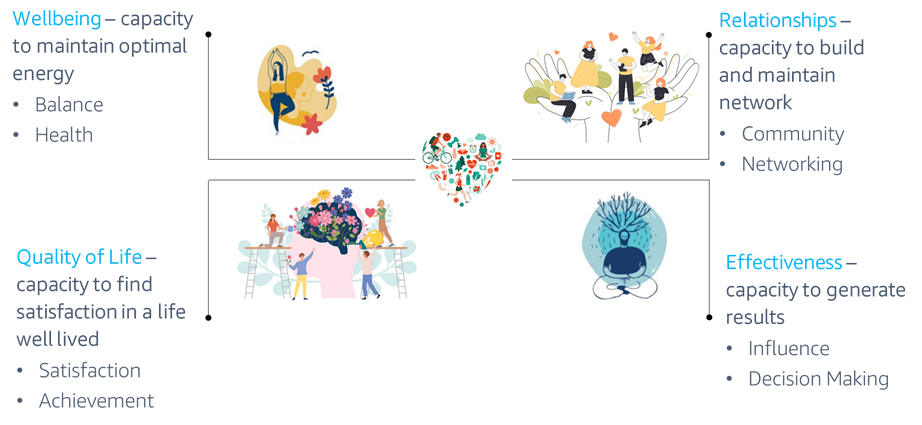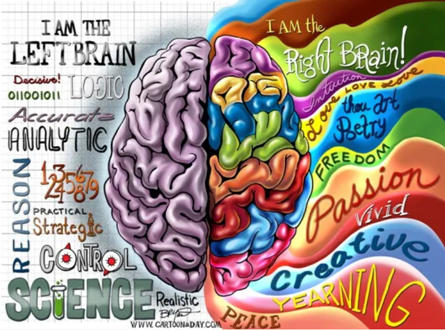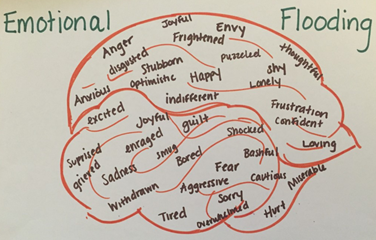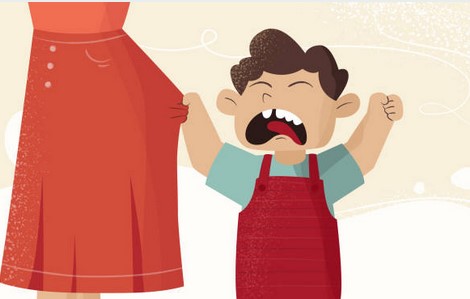When I decided to start the EQ journey, I even didn’t think how strong can be the power of EQ within the family. When I started my Six Seconds certification path, I answered this question ‘What is the goal you have here?’ with something really business related. The biggest discovery for me was to change completely my focus, as I felt the need to work on myself and my quality of life, before looking at business and to repeat the same pattern again and again. I am a woman, a mother of two children (5 and 2 years) and a wife too: this is part of the equation!
That was a discovery coming naturally over the months. In Six Seconds, the performance is represented by 4 areas and 8 success criteria and I think this perfectly represents what I mean: we cannot think to ourselves operating in “silos” within our life. Business is only one part of what we do and is impacted by/impacts on a wide range of areas we deal with.

I found myself focused on emotions, after recognizing that they have huge role in our days and that they are real and powerful!
Thanks to this journey, I realized I have a rational brain style, so I am more facilitated in collecting rational data than emotional ones. I decided to go deeper in some areas of EQ by exploring some scientists’ publications to increase my emotional literacy and to learn how to distunguish and name emotions to reduce – at cortex level – their intensity.
I also learnt that we have control of our life and that optimism is key. But- more than all – I had the chance to recognize myself in lot of situations communicating through a pessimistic explanatory style (i.e. providing Permanent, Pervasive and Personal explanations).
I realized that, as mother of 2 children, I have a huge impact on them: keeping attention to our actions as well as to our children’s emotions is key. My curiosity on how to leverage EQ with our children led me to Daniel Siegel and to his “12 revolutionary strategies to promote the mental development of the child” (book here). I think this is a key reading and I would share what I bring with me from this book and few actionable strategies!
As Siegel states, our brain is the one mostly determining who we are and what we do. Children’s brains are shaped by experiences that we – as parents – provide them. Knowing this, is key to grow up a child strong and resilient. Our brain is made up of several areas executing different things. Key element to favor an optimal development is to let all the different brain areas to work together. Integration means linking together different areas in order to have a well-functioning whole.
It is really important helping children to have a high integration level in order to leverage on all their resources in a coordinated way. We want them to develop a horizontal integration as well as a vertical integration. Neurosciences discovered the brain neuroplasticity: our brain changes and this is key as a premise to know that we can rewire it in order to get to the highest level of integration. Brain is modified by experience: experience activates neurons.
Neurons activating contemporary, are linked together. Integration is all about wiring and rewiring. It is also important to say that our genes are impacting on the temperament.
Reason why children’s brain is not always able to practice integration is because it is not fully developed. Good news is that, leveraging on daily opportunities, we can influence the development of our children‘s brains.
Integration means well-being: let’s imagine a river with two banks. One bank is the rigidity and one is the chaos. Every one of us goes back and forth between the two banks: the longer we can avoid approaching these banks, the longer we can enjoy the river of well-being.
Majority of issues we face as parents are driven by those moments when our children are not following the river flow, while they are too much rigid or chaotic. Left hemisphere is logical, letteral, linguistic and linear. Right hemisphere is holistic. It is interested in the overall view and not to the details. It prefers the non-verbal communication, images, emotions and records. In small children the right hemisphere is the dominant one, especially before the 3 years age. In order to have integration, it is crucial that the two hemispheres work together and in synergy.
Focusing on horizontal integration, we know that this is key to develop our children: in this way our children will give equal importance to emotions and logic, avoiding an emotional flooding or even an emotional desert.

Strategy #1- Right hemisphere talks to right hemisphere! Tune in and rechanneling. When a child gets really hungry or is in an intense emotional status, parents should remind that the brain has a right and left hemisphere. In that exact moment, the child is using the right hemisphere and – consequently – trying to talk to them in a logical way is counterproductive. The child will never consider any logical discussion: during the emotional flooding, we should provide an answer to emotional needs first (e.g. telling them that we understand, having a facial expression/gesture/body language able to connect to their feelings, giving an hug) and then we can use the logic to find a solution.

Strategy #2 – Name it to tame it. Experiences like pain, delusion or fear could overwhelm the child due to emotions intensity and body sensations pervading the right hemisphere. Our right hemisphere elaborates emotions and records, while it’s the left side that makes them meaningful. To overcome a difficult experience, right and left hemisphere need to work together to tell our life. Children, especially when they feel intense emotions, need someone able to help them to use the left hemisphere to understand the situation. Scientific studies demonstrate that naming an emotion, even if high level, reduces the activity of right hemisphere’s emotional circuits. Sometimes, parents avoid to talk to children about difficult experiences, while this is exactly what the children need. Otherwise their brain will continue to look for the meaning of that experience until it succeeds. Don’t underestimate the effectiveness of storytelling, ask them to story tell what happened to understand themselves and their world.
As parents, ask yourself:
- “Is my right hemisphere prevailing? Does it happen often to be overwhelmed by emotional flooding, bringing my children in the chaos I generate? “
- “Or am I dealing with an emotional desert?”
Did you have the chance to introduce the two strategies in your daily life? What do you see as major changes?

No responses yet